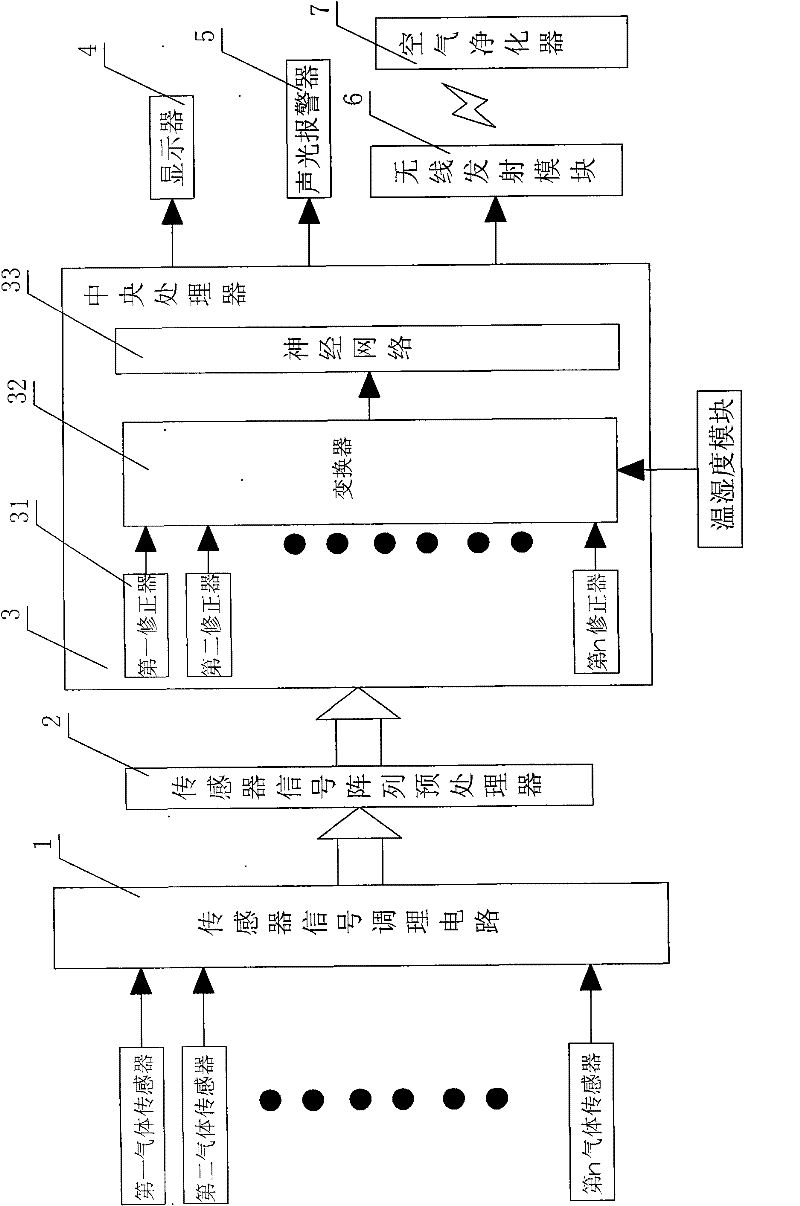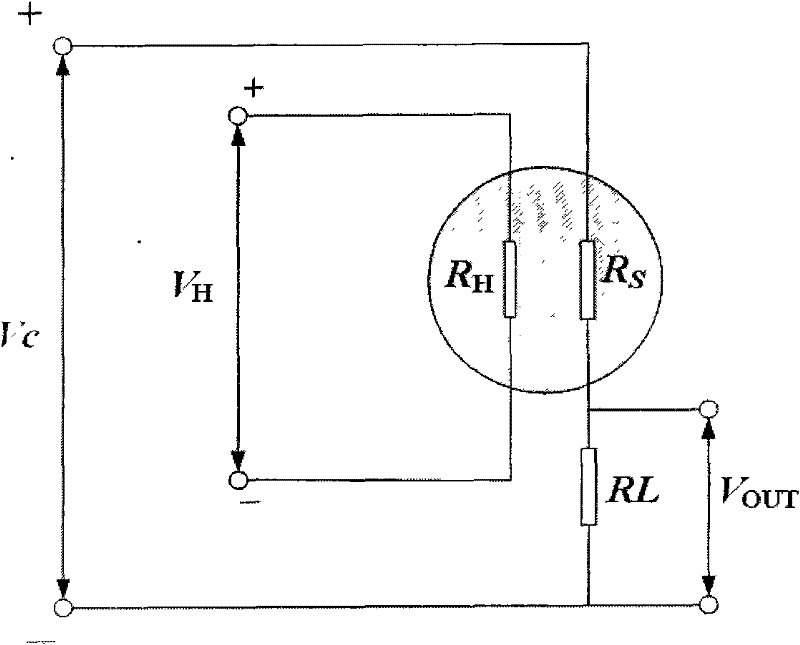Air-quality monitoring system based on electronic nose technique, and monitoring method thereof
An air quality and monitoring system technology, applied in the direction of material resistance, etc., can solve the problems of mutual interference of various gases and sensor dispersion.
- Summary
- Abstract
- Description
- Claims
- Application Information
AI Technical Summary
Problems solved by technology
Method used
Image
Examples
Embodiment 1
[0090] Example 1, such as figure 1 As shown: an air quality monitoring system based on electronic nose technology according to the present invention is provided with a sensor signal conditioning circuit 1, the quality detection input terminal group of the sensor signal conditioning circuit 1 is connected with a gas sensor group, and the sensor signal conditioning The output end of the circuit 1 is connected to a sensor array signal preprocessor 2, the output end of the sensor array signal preprocessor 2 is connected to a central processing unit 3, and the display end of the central processing unit 3 is connected to a display 4;
[0091] The theoretical basis of the present invention is pattern recognition, and pattern recognition requires certain preprocessing of data in order to obtain the best recognition effect. Assuming that the sensor array of the electronic nose system has n sensors, and the measured volatile organic compounds are measured p times, a p×n-dimensional samp...
Embodiment 2
[0118] Embodiment 2, a kind of monitoring method of air quality monitoring system, its key is to comprise the following steps:
[0119] Step 1: use a group, that is, use the temperature and humidity module to obtain the environmental temperature and humidity digital signal g, and send it to the converter 32 in the central processing unit and the sensitive resistance value changes of Q gas sensors to obtain Q changed gas information a, Send to the sensor signal conditioning circuit 1;
[0120] Step 2: The sensor signal conditioning circuit 1 is used to convert the gas information a into Q varying voltage signals b;
[0121] Step 3: The sensor array signal preprocessor 2 converts Q variable voltage signals b into Q digital signals b', and performs feature extraction on the Q digital signals b' to obtain Q feature extraction values d;
[0122] Step 4: Q correctors 31 respectively use the virtual resistance method to perform sensitivity compensation on a digital signal d, and o...
PUM
 Login to View More
Login to View More Abstract
Description
Claims
Application Information
 Login to View More
Login to View More - Generate Ideas
- Intellectual Property
- Life Sciences
- Materials
- Tech Scout
- Unparalleled Data Quality
- Higher Quality Content
- 60% Fewer Hallucinations
Browse by: Latest US Patents, China's latest patents, Technical Efficacy Thesaurus, Application Domain, Technology Topic, Popular Technical Reports.
© 2025 PatSnap. All rights reserved.Legal|Privacy policy|Modern Slavery Act Transparency Statement|Sitemap|About US| Contact US: help@patsnap.com



